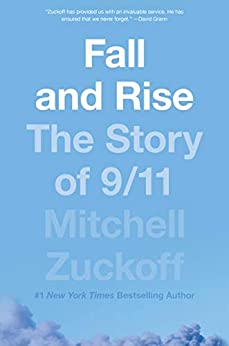More on this book
Community
Kindle Notes & Highlights
With time, news becomes history. And history, it’s been said, is what happened to other people.
“If you didn’t go through it, there are no words that can adequately describe it; if you were there, then no words are necessary.”
The essential job of journalism, from daily reporting to narrative history, is to answer six fundamental questions: who, what, where, when, why, and how.
Christianity—especially the evangelizing American variety—and Islam were obviously competitive faiths. Viewed through the eyes of men who were spiritually anchored in the seventh century, Christianity was not just a rival, it was the archenemy. To them the Crusades were a continual historical process that would never be resolved until the final victory of Islam.
Radicalism usually prospers in the gap between rising expectations and declining opportunities. . . .
February 23, 1998. On that day, a shadowy forty-year-old Islamic militant named Osama bin Laden issued a fatwa, a furious religious decree. His edict declared war on the United States and all its citizens, wherever they or their interests could be found.
Gallup poll17 taken on September 10, 2001, found that fewer than 1 percent of Americans considered terrorism to be the nation’s No. 1 concern.
Building fires typically don’t get hot enough to melt structural steel columns, even relatively thin ones. But long before steel reaches its melting point, it loses strength. The weaker a steel column gets, the less able it is to carry its assigned or reassigned load. Similarly, fires could make unprotected steel floor supports sag, adding stress and pulling down on the exterior and core columns to which they were attached.
Roughly eight thousand people27 escaped the South Tower. But 619 people remained on the 77th floor and higher, and eleven stood in the lobby, when it fell. That didn’t include emergency responders and others whose exact final locations were unknown. Among the dead were men and women who almost certainly would have lived if they’d evacuated immediately or soon after but who remained inside because they were told not to leave or because they stayed to help others.
By one estimate,2 1,250 people evacuated the North Tower in the first few minutes, even before United Flight 175 hit next door. Another 6,700 men and women left before ten o’clock. Yet along with more than nine hundred civilians still heading for the exits, more than two hundred firefighters remained inside the North Tower, either climbing or resting for the next upward push.
Not including the hijackers, 2,977 men, women, and children were known to have been killed on the four planes and at the World Trade Center and the Pentagon. Among the dead were 1,462 people in the North Tower, 630 in the South Tower, 421 emergency responders in New York, 246 passengers and crew members on the planes, and 125 men and women in the Pentagon. No one died on the ground at Shanksville.


